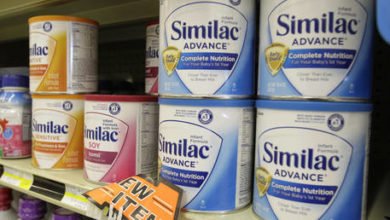U.S. to Boost Gas Supply to E.U. to Cut Dependence on Russia

TThe U.S. and European Union signed an agreement to boost the supply liquefied natural gases to European countries, up to 15 billion cubic metres by 2022.
It is hoped that the international partners will work together to reduce dependence on Russian fuel imports. E.U. will be bound by the terms of this agreement. E.U. member states agree to work together until 2030 to secure demand for 50 Billion cubic meters of U.S. Liquefied Natural Gas. In the last years, LNG imports from Russia were between 14 and 18 billion cubic metres annually.
President Joe Biden and European Commission President Ursula von der Leyen will announce the pact—which includes the formation of a joint task force—ahead of an appearance together in Brussels following Biden’s meetings Thursday with NATO, the Group of Seven and E.U. leaders.
Germany presented its plan in Berlin to reduce Russia’s fossil fuel imports dramatically and eliminate dependence on Russian gas. Currently, European buyers are competing with Asian countries for the world’s limited supply of LNG cargoes.
The issue is critical as Russia is the E.U.’s biggest natural gas supplier, accounting for more than 40% of imports. E.U. The country is also the largest source of coal and oil imports for the E.U.
However, the aspirational pact is light on detail, and the U.S. did not immediately say which partners it would source new shipments from or by when—suggesting that final agreements aren’t yet in place with suppliers.
The primary goals of the joint task force—which will be chaired by a representative each from the White House and the European Commission—will be to diversity LNG supplies in line with efforts to combat climate change and to cut demand for natural gas.
It will “work to ensure energy security for Ukraine and the E.U. in preparation for next winter and the following one while supporting the E.U.’s goal to end its dependence on Russian fossil fuels,” according to a white House fact sheet.
The 27-nation bloc is aiming to replace this year nearly two-thirds of its total gas imports from Russia, which amounted to 155 billion cubic meters last year, after the war waged by President Vladimir Putin forced an unprecedented re-think of the bloc’s energy strategy.
According to an E.U. official, additional imports from America will be slow to begin, as Europe is constrained by its current regassification capacities, terminal numbers, and interconnectors. An official who declined to comment on private discussions, asked for anonymity.
A transatlantic agreement was reached ahead of the planned Berlin meeting next week between German power-plant fuel buyers and American gas exporters. People familiar with this plan say that the U.S. Embassy in Germany coordinates the meeting with the liquefied petroleum gas suppliers. This is expected to occur after the Berlin Energy Transition Dialogue conference (March 29-30, Berlin Energy Transition Dialogue).
This month’s European Energy Strategy was presented by the Commission. The strategy aims at replacing 101.5 billion square meters of Russian natural gas by using alternative sources, renewables, and increasing energy security. The new strategy aims to secure 50 billion cubic metres of LNG from new sources.
Imports from the U.S. of this fuel have increased exponentially in the face of Europe’s energy crisis. This was a few months prior to the conflict and was accompanied by limited flow from Russia. The transatlantic LNG delivery volume was around 22 billion cubic meters in 2021. Their volume was 4.4 billion cubic metres in January 2022.
—With assistance from Ewa Krukowska, Alberto Nardelli and Arne Delfs.
Read More From Time





